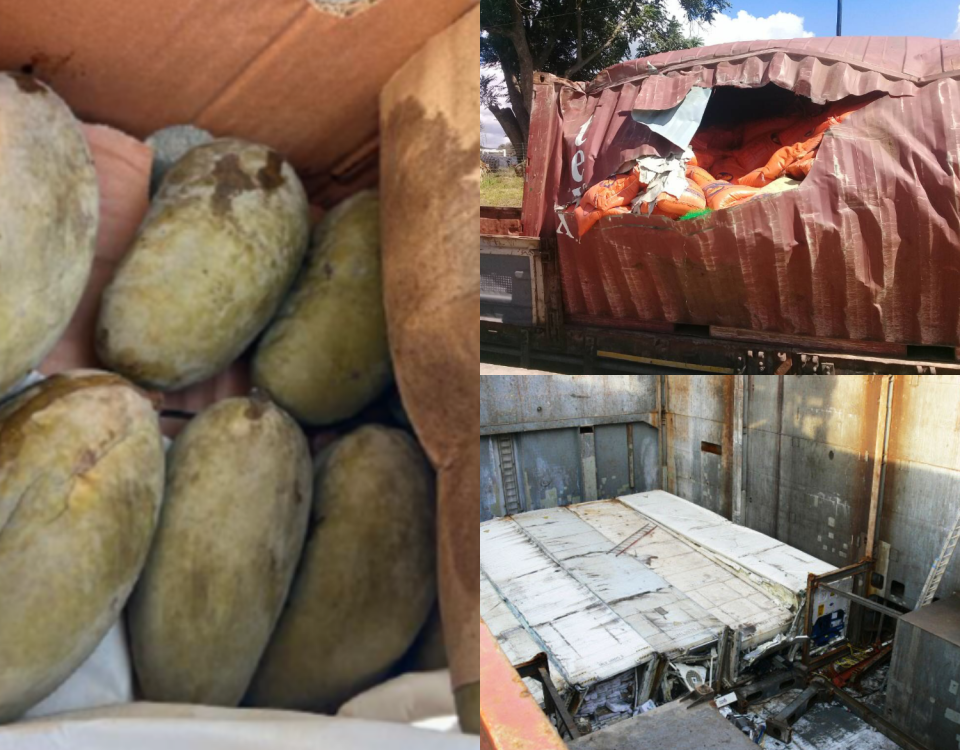Notice of Loss, Your First Step in Filing a Cargo Claim

The Importance of Cargo Claims Recovery in Thriving Exports
March 29, 2024
What to Look for When Inspecting a Damaged Container
April 5, 2024When your cargo arrives in rough shape, it’s easy to feel overwhelmed. But before you panic, there’s a crucial first step you need to take: filing a Notice of Loss. This document serves as your official objection to the condition of the delivered goods and is essential for initiating the cargo claims process.
At Recoupex, we have handled cases wherein neither the exporter nor the consignee has issued a Notice of Loss. And it’s a more common occurrence than desired. Some exporters/consignees, particularly new to international trade, might not be fully aware of the importance and legal implications of filing a Notice of Loss. They may not understand that failing to do so can significantly weaken their claim. And while in the rush to receive and process their cargo, some companies may overlook the need to meticulously document any discrepancies upon delivery. This is especially true for high-volume shipments where cursory inspections might be the norm. And lastly, there might be confusion about who is responsible for filing the Notice of Loss. While it’s typically the consignee, situations can arise where the shipper or a third-party logistics provider might be involved, leading to potential delays or missed deadlines.
Who Files the Notice of Loss?
The Notice of Loss is typically filed by the consignee, the recipient of the cargo. They’re in the best position to discover damage or discrepancies upon receiving the shipment. However, in some cases, a third party like a freight forwarder or legal representative may handle the notification on behalf of the shipper or consignee.
Who Receives the Notice of Loss?
The Notice of Loss is directed towards the carrier, the company responsible for transporting your goods, or their representative. There are several benefits to filing a Notice of Loss:
- Alerts the Carrier: It immediately informs the carrier of any irregularities, allowing them to address the potential claim proactively.
- Provides Legal Certainty: It establishes a record of the issue for both the carrier and their insurer, ensuring everyone is aware of the potential claim and can prepare their response.
- Preserves Recourse Rights: While the claim is initially filed with the carrier, they may have the right to seek compensation from the party truly responsible for the damage.
How to File a Notice of Loss
The most common way to file a Notice of Loss is by noting it directly on the consignment note upon delivery. However, for added documentation and a more comprehensive approach, it’s highly recommended to send a formal protest letter to the carrier as well and while you’re at it, you can invite the carrier for a joint inspection. You can refer to this Recoupex template for a detailed guide.
When is a Notice of Loss Required?
Filing a Notice of Loss is crucial in various scenarios, including:
- Damage to goods
- Missing cargo
- Late deliveries
- Non-delivery
- Concealed damage or missing items
- Incorrect goods delivered
In any of these situations, a timely and accurate Notice of Loss protects your rights as the consignee and ensures your claim is handled properly.
What Information Should Be Included?
A well-drafted Notice of Loss should include the following details:
- Date and Time: The specific date and time when the loss or damage occurred.
- Detailed Description of Goods: A thorough description of the affected items.
- Estimated Value: The approximate value of the loss or damage.
- Circumstances of Loss (if known): A description of how, where, and why the loss or damage is believed to have occurred.
- Transport Contract Details: Relevant information from the transport contract, such as the bill of lading number.
- Immediate Actions Taken: Any steps taken immediately after discovering the loss.
Consequences of Failing to File
Neglecting to file a Notice of Loss on time can have significant consequences. The carrier may benefit from a legal presumption that the goods were delivered in good condition, making it harder for you to prove the damage occurred during transport. This can significantly weaken your claim and decrease your chances of recovering compensation.
What Happens After Filing?
Following the initial Notice of Loss, a successful claim requires a multi-step approach. First, compile and submit detailed documentation supporting the nature and extent of the loss or damage. Next, engage professional surveyors to assess the severity and cause of the loss. Throughout the process, maintain clear communication with both the carrier and your insurance company to ensure everyone is informed about the claim’s progress. Actively follow up for a timely resolution, and if applicable, take reasonable measures to salvage recoverable goods. Remember to keep records of any storage, transportation, or protection costs incurred, as these may be covered by your cargo insurance policy.
When you understand the importance of the Notice of Loss and following these steps, you can significantly increase your chances of a successful cargo claim recovery, minimizing the financial impact of damaged or lost goods, whether you’re dealing with dry cargo or temperature-sensitive fresh produce.
Recoupex is a hub of transport lawyers – experts in cargo claims. We assess your case quickly. We have successfully recovered claims from Maersk, Sealand, Hapag-Lloyd, Mediterranean Shipping Company – MSC, CMA CGM, and other carriers.



